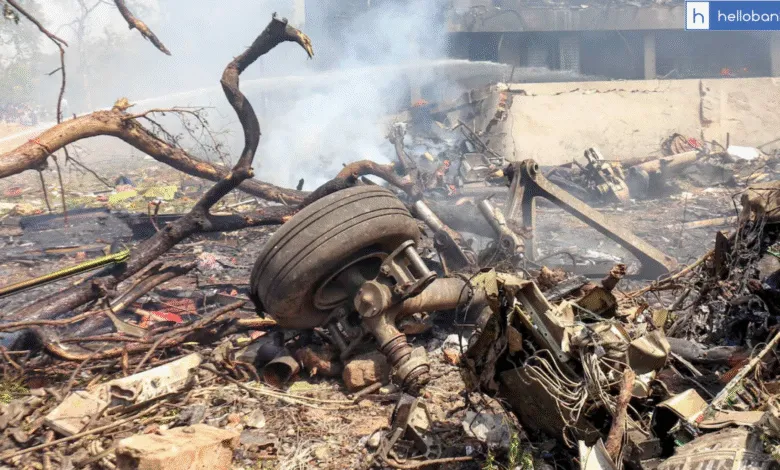Air India Aircraft Accident 12 June 2025 Preliminary Report Released, Download Report PDF

| ➡️ Get instant news updates on Whatsapp. Click here to join our Whatsapp Group. |
A fuel supply issue caused last month’s Air India plane crash, killing 260 people, including those on the ground. A preliminary investigation by India’s Aircraft Accident Investigation Bureau (AAIB) found that the fuel control switches in the cockpit were turned off just after takeoff, leading to engine failure.
The flight, a Boeing 787-8 Dreamliner, was heading from Ahmedabad to London Gatwick on June 12 with 242 people on board. Just moments after takeoff from Sardar Vallabhbhai Patel International Airport, the aircraft crashed, killing almost everyone except one passenger.
Investigators reviewed the aircraft’s black box data, which included:
- 49 hours of flight information
- 2 hours of cockpit voice recordings, including audio from the crash
According to the report, as the aircraft reached a speed of 180 knots during takeoff, both engines’ fuel switches were flipped from “RUN” to “CUTOFF” — with just a 1-second gap between the two. This cut off fuel supply to both engines.
In the cockpit recording, one pilot is heard asking, “Why did you cut off?”, to which the other pilot responds, “I didn’t do it.” Soon after, the switches were flipped back to “RUN” to restart the engines, but it was too late — the engines had not fully recovered before the crash occurred.
What Are Fuel Control Switches?
The fuel switches are located between the pilot seats, behind the throttle levers. They are protected by a metal bar and a lock, making accidental movement very unlikely. A Ram Air Turbine (RAT), an emergency power device, was seen deploying soon after takeoff, which confirmed the plane was losing power.
According to the report, when fuel switches are moved back to “RUN” mid-air, the aircraft system tries to automatically restart the engines. But in this case, the plane had already started losing altitude. Just seconds before the crash, one of the pilots made a “MAYDAY” emergency call, but there was no further communication before the crash.
Who Was On Board?
Air India reported that 242 passengers and crew were on the plane:
- 169 Indians
- 53 Britons
- 7 Portuguese
- 1 Canadian
Tragically, the crash site included BJ Medical College and Hospital hostel, where people on the ground were also killed. This brought the total number of deaths to 260.
Who’s Responsible?
The AAIB report does not confirm who flipped the switches, whether it was a pilot or a technical fault. But safety experts say the fuel switches cannot be flipped by accident, as they are designed to prevent that.
Pilot Experience
- The captain was 56 years old with over 15,000 flying hours.
- The first officer was 32 years old with 3,400 hours of flying experience.
Despite this experience, the investigation found no mechanical issues with the aircraft. The:
- Fuel quality was fine
- Weight and load were within safe limits
- Wing flaps and landing gear were in correct positions
- No dangerous cargo was on board
- No bird activity was reported in the area
